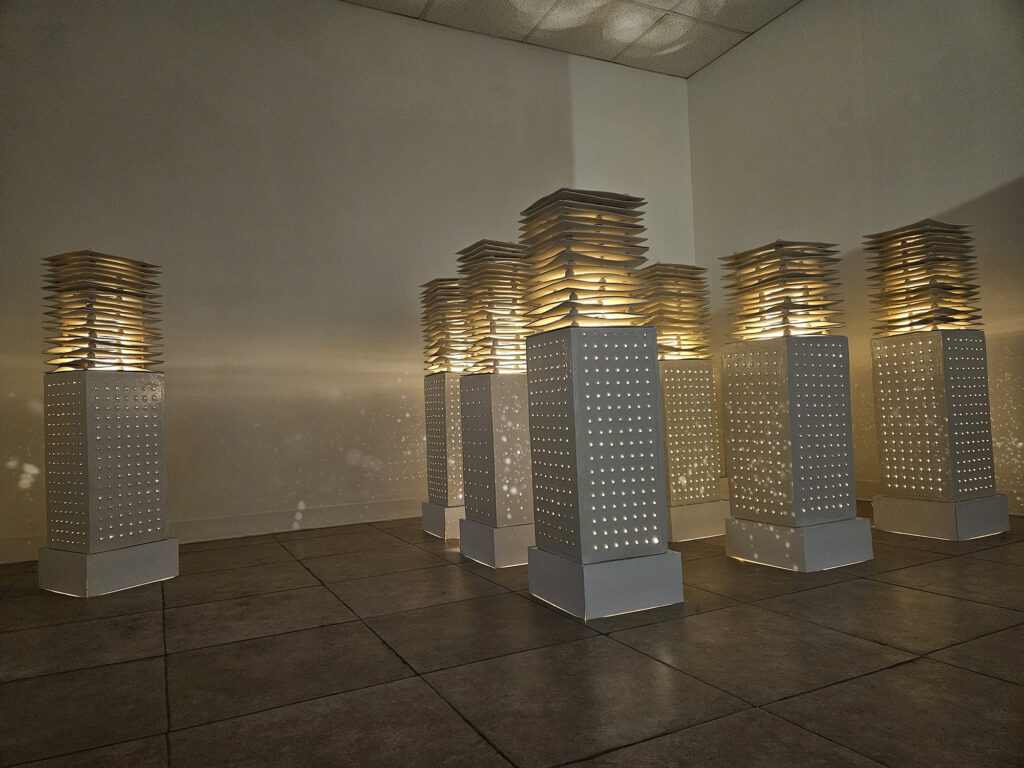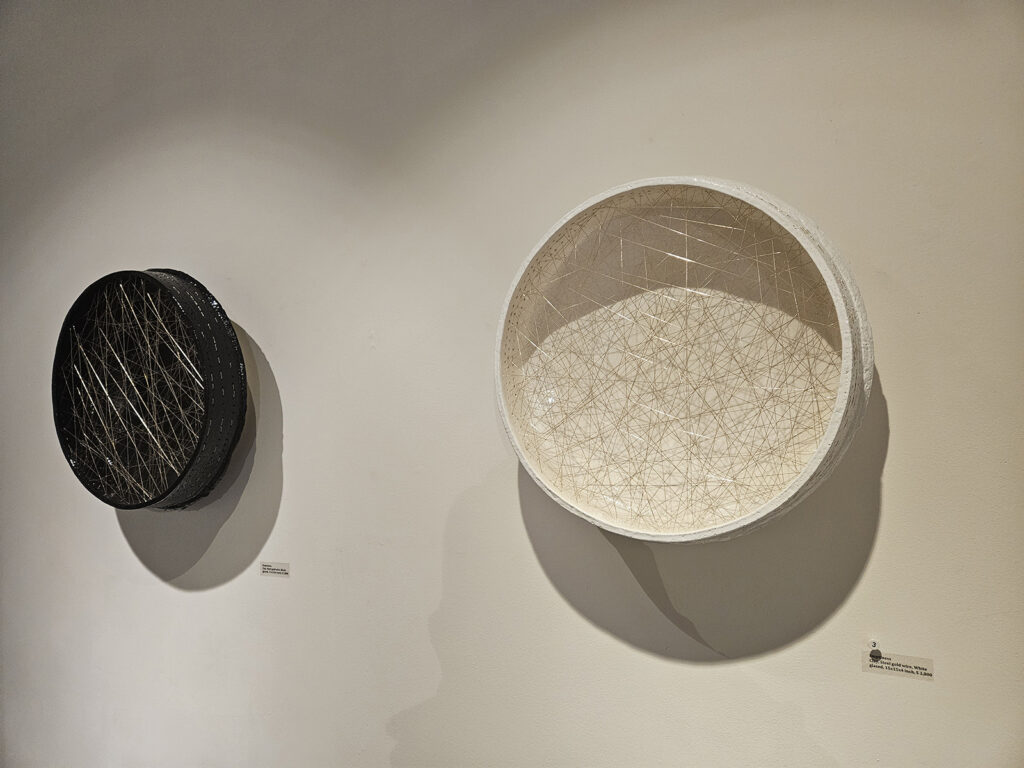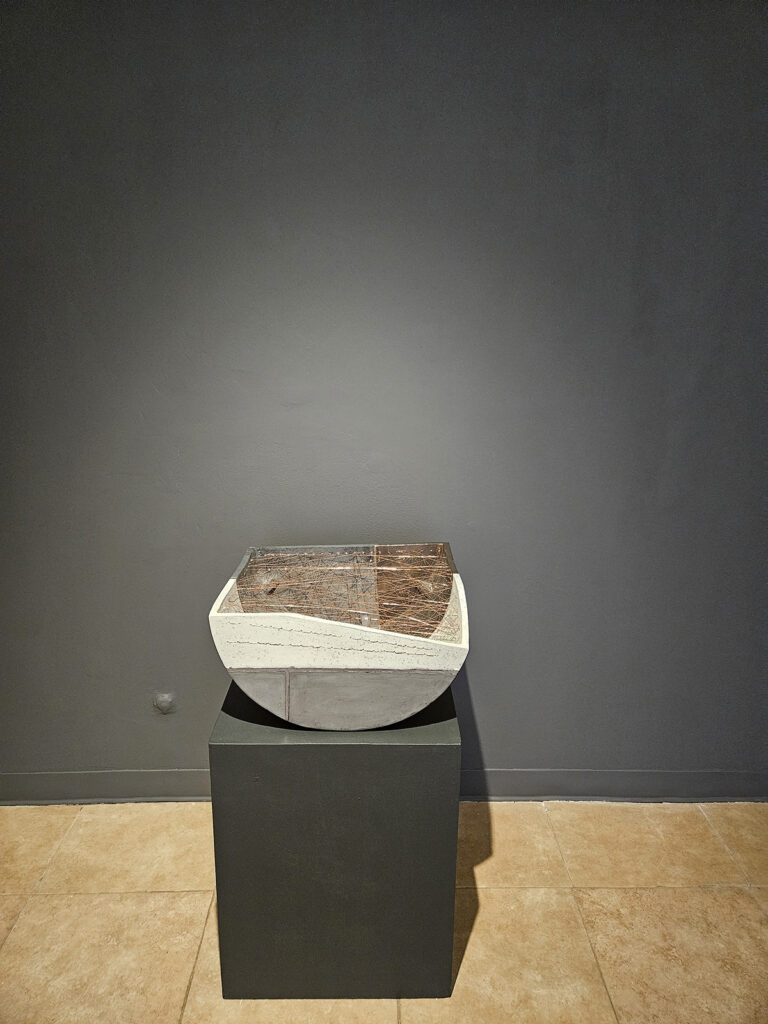by Dr. Thalia Vrachopoulos

Jongsook Kang’s two-part series Emptiness and Dreaming Desire, presented together at this solo exhibition, manifest the artist’s innermost spiritual and mundane experience undoubtedly manifesting the secret nucleus of her ceramic sculpture in the last twenty years; namely New York/Seoul cities and Eastern Philosophy. Deeply inspired by the mystical teachings of Śūnyatā of Japanese Zen Buddhism, Kang imports a reflective quality that conveys silent introspection by interweaving a nexus of gold, silver, black and copper wires throughout her pieces that faintly recall the Japanese aesthetic of wabi-sabi but also the Korean philosophy of emptiness as fulness called bium. By so doing, she ritually metamorphosizes her objects into memory vestiges of human social networks or relationships in her beloved cities New York or Seoul. These ceramic edifices can be read in terms of the isolation felt during the Covid-19 pandemic, or in general as the loneliness of city life. Simultaneously, they can be seen as reconstructions associated with objects and mnemonic taboos – a transcended net of intertwined potentialities withdrawn from our a-priori forms of time and space – for the deceased victims of the Corona virus crisis.

Furthermore, Kang’s delicate layers of clay, which vaguely recall Seoul’s or New York’s towering skylines casually observed from across the banks of Hudson or Han Rivers, deliberately function as metaphors and concrete incorporations of Confucian ontological principles. This philosophy is combined with Daoist aesthetics in Korea to formulate ideas of the yin and yang which represents the opposing yet similar principles of dark/light, feminine/masculine, action/inaction, dark and light in cosmic harmony.

Kang skillfully handles physical and architectural space through the precise use of artificial lighting as a metaphysical duality of substantial positivity or negativity (as in in yin-yang Taegeuk philosophy). Moreover, the artist consciously transfigures her skyscraper-like constructions of square plates into imaginative comments about the ever-growing solitude of everyday life, principally experienced in global metropoles like New York or Seoul. Through her sculptures Kang also comments upon the eternal continuation of incessant change in a hectic world of constant becoming. As she laconically wrote in her artist’s statement: “in other words, my sculptures embrace the possibility of countless changes, and infinite possibilities that lead to eternity. The realization of the true colors of yin and yang, in which the eternity of light is condensed, can be said to be my own Dream-Desire”.
Many German philosophers or psychologists of 19th and 20th century Sigmund Freud for example, firmly believed that desire is the inner drive that substantially formulates every human being, while always being dynamic and tenuously alternating between objects and needs. While concurrently eternal and torturously unceasing like a strong current, desire undeniably (re)defines the unique individuality of each and every life form on the planet. Kang’s Dreaming Desire powerfully constitutes the polymorph matrix of opposing desires, in which frenetic life and spiritual emptiness or receptive yin and active yang harmoniously co-exist together despite their existential dissimilarities and internal struggles.
